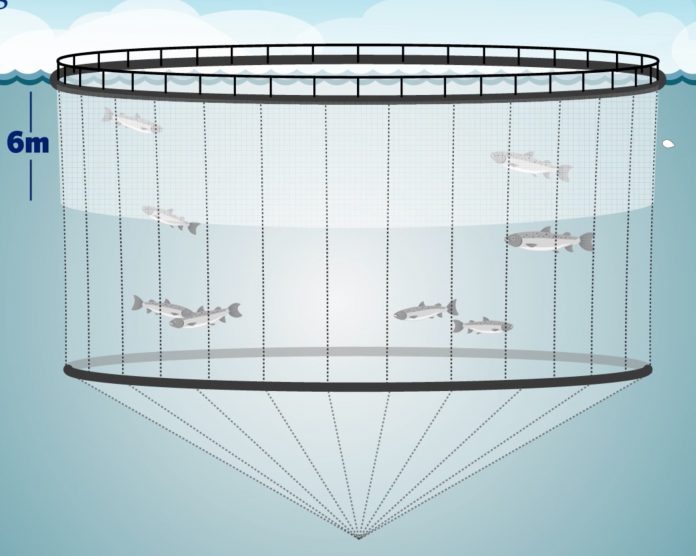Scottish Sea Farms has reported real progress toward lice-free operations, after seeing more of its farmed salmon live free of the pest and introducing a promising sea lice shield at one of its grow-outs.
That grow-out outperformed its previous harvests after installing shields that let water circulate but kept lice out. The system is intended to complement the work of lice-eating fish and warm lice “baths” which, in 2017, helped six of the company’s farms to lice-free operations.
The shield is a permeable fabric that lets oxygenated water move freely into fish pens while keeping pests out. The fabric skirts the pen to a depth of 6 metres, the outer limits of sea lice’s comfort zone.
Strong growth
The new shields were first introduced at the company’s farm at Slocka, Ronas Voe on Shetland in May 2017. In the nine months since, sea lice levels have remained below the Marine Scotland Code of Good Practice threshold, and the salmon are showing good growth and health, the company said.
The shields have been so effective, Scottish Sea Farms is investing GBP 800,000 in two Scottish suppliers — William Milne Tarpaulins in Aberdeen and W&J Knox in Ayrshire — to roll-out similar protection at 11 of its other farms. The company is also working with neighbouring salmon growers to synchronise use of the shields, as part of a farm management agreement for those same areas.
This latest advance is part of a wider GBP 11.8 million investment in 2017 by the company to enhance the health and welfare of its salmon — over 85 percent of this is being spent on non-medicinal approaches, the company said.
Cleaner-fish help
“We strive, wherever possible, to replicate the natural conditions that salmon are known to thrive in, said said Jim Gallagher, managing director of Scottish Sea Farms.
“As any farmer will understand however, this comes with its own risks as the marine environment presents new challenges all the time.”
Other anti-lice action includes doubling the use of farmed cleaner fish, only 25 percent of which are now imported by the company. Scotland-wide imports of the fish are much higher, although it is known that Marine Harvest — with a nod from its salmon-farming peers — is addressing the cleaner-fish shortage.
Gallagher’s stated goal is farmed-only cleaner-fish by 2020. The Thermolicer technology the company has co-founded is expected to wash surviving sea lice right into the mouths of waiting cleaner fish.
Bigger spend
With fish deaths in the spotlight at the parliamentary level, Scottish Sea Farms is upping its fish-health spending after a tough year for the industry: GBP 200,000 this year in cutting-edge environmental monitoring equipment to guard against warmer oceans, and GBP 260,000 on new underwater camera systems.
“Even a seemingly slight increase in sea water temperatures of 0.5 degrees can have an impact on the marine environment,” said head of company fish-health, Ralph Bickerdike.
“This new data monitoring equipment is enabling real-time analysis of key markers such as salinity and oxygen concentration. The new underwater cameras enable us to observe the fish within the pens and respond swiftly should there be any changes in their natural behaviour.”

